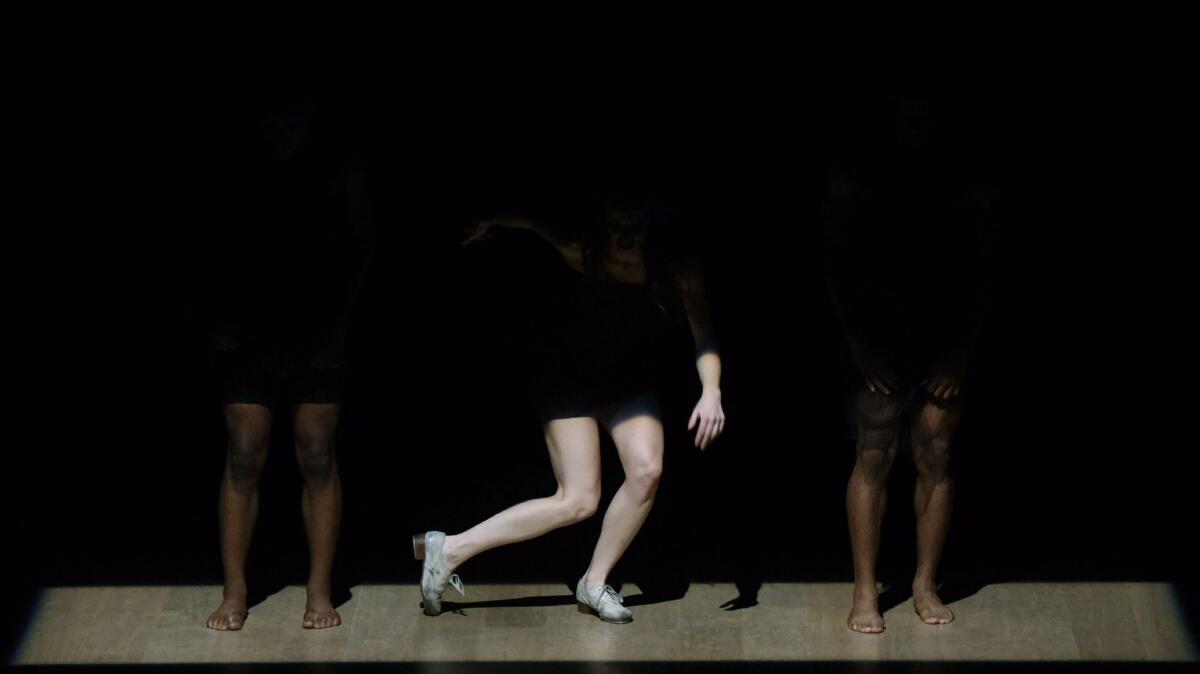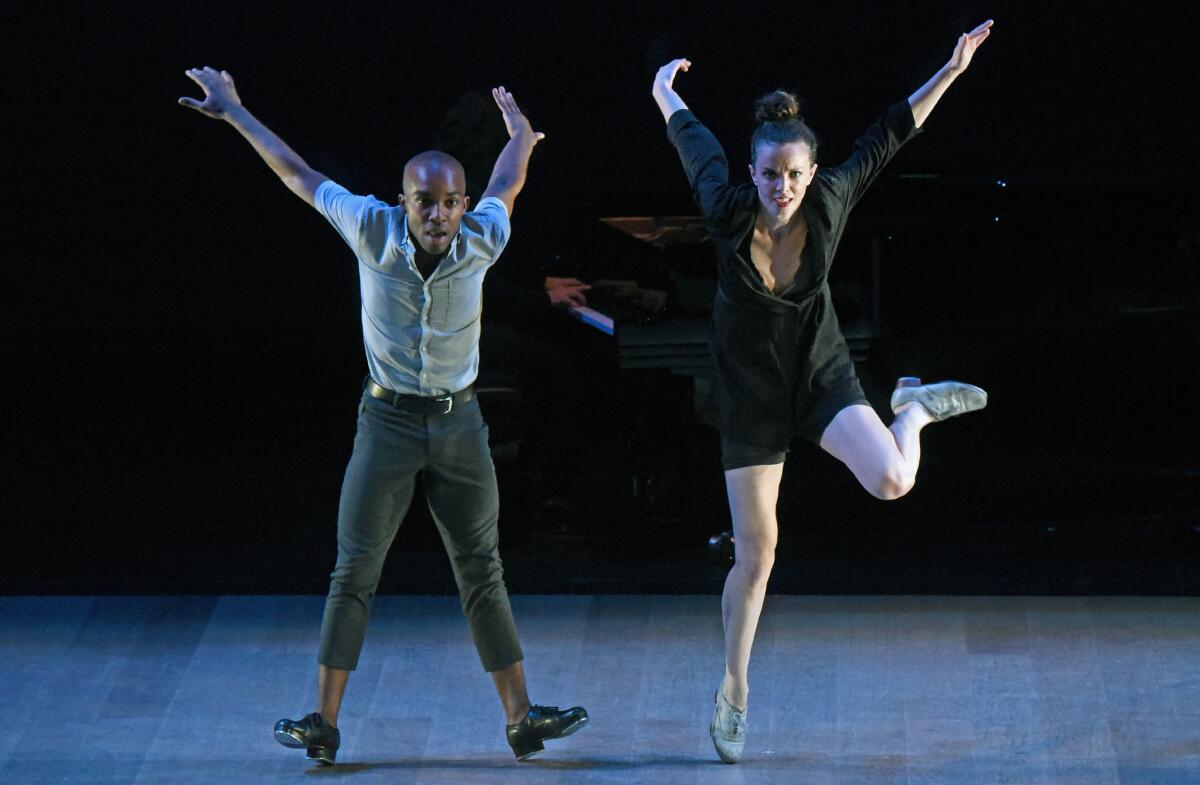Review: Dorrance Dance turns tap on its head: Mesmerizing moves at the Wallis in Beverly Hills
- Share via
Audiences have seen the once-trivialized art of tap dancing reclaim its powerful African American identity, deepen its expressive potential and hone its speed and intricacy to unprecedented levels. Savion Glover’s dazzling performance at the Ford Theatres in July pretty much summarized all that growth, and then some.
Enter Dorrance Dance, the award-winning New York ensemble that expands tap in a different direction, breaking up the unyielding vertical stance that previously defined tap-dancers and allying the art with other genres such as break-dance and hip-hop.
At the Wallis Annenberg Center for the Performing Arts on Saturday, Michelle Dorrance’s 10-dancer company reflected plenty of racial, physical and stylistic diversity yet could deliver complex unison footwork with a precision matching any cookie-cutter tap corps of the past.
A 2015 winner of a MacArthur fellowship, Dorrance has given tap a new physical profile: Her dancers never seem chained to the floor but can tap from all sorts of unlikely positions, balances and trajectories. Yes, tap dancers in Hollywood musicals could do it — because their taps were pre-recorded. Dorrance’s crew does it live and in your face.
Creatively linked to a recorded

SIGN UP for the free Essential Arts & Culture newsletter »
Using recorded music by Aphex Twin and Thom Yorke, “Three to One” (2011) began with a lighting effect that isolated the dancers’ feet, an effect that the Australian company Tap Dogs also used to adopt. In this case, however, Dorrance’s feet wore tap shoes while Tittle and Matthew “Megawatt” West were barefoot. Dancing to something like amplified bell-tones, Dorrance became a kind of rhythmic engine for the threesome, with the men’s silent footwork accented and in a sense propelled by her step-rhythms.
After they left, “Three to One” became a dramatic statement, as a moody sound wash accompanied Dorrance’s increasingly fearful and halting attempts to keep dancing in the growing darkness. At the very end she seemed to be dancing not so much in the dark as against it, defying it — a brave, hopeless last stand.

Featuring live music by Prawn til Dante, (a.k.a. Donovan Dorrance, Michelle’s brother, and Gregory Richardson), the new expanded version of “Myelination” offered improvisational solos as well as full-company passages. The virtuoso tapping and, in one sequence, the sliding and scraping along the floor, contrasted with the low-to-the-ground break-dancing, gymnastics and weighty modernism of West and Ephrat “Bounce” Asherie (both credited with additional choreography).
Unlike the bare-feet-versus-tap-shoes in "Three to One," this juxtaposition of silent and sonic dancing never culminated in a thematic statement but added another kind of expertise to the evening.
Along the way, Warren Craft danced another of his magnificently bizarre, sprawling solos, falling as often as not but supremely unfazed. He and Rahardjanoto also periodically joined the four musicians. Vocals by Aaron Marcellus added another texture to “Myelination,” but sometimes the band stopped playing and the cascade of tap rhythms provided music of its own.
Support coverage of the arts. Share this article.
MORE NEWS AND REVIEWS:
Hollywood & Highland censors sculpture in response to Weinstein scandal
With Plácido Domingo and L.A. Opera, 'Nabucco' still has the power to provoke
'Springsteen on Broadway': A rock-star confessional with heart
The biggest entertainment stories
Get our big stories about Hollywood, film, television, music, arts, culture and more right in your inbox as soon as they publish.
You may occasionally receive promotional content from the Los Angeles Times.






